Up Next

Williams’ 2020 season was the first time in its illustrious history as an F1 constructor that it scored zero points – though it did also draw a blank in its debut part-time F1 campaign in 1977, running a customer March.
For Williams, 2020 was all about achieving respectability following last year’s dismal campaign. And while the aforementioned zero points and last in the constructors’ championship is actually slightly worse than last year in terms of results, what’s vastly more significant is the performance step that elevated Williams from off the back into the ‘Class C’ group of teams.
Last year, Williams was around 2% behind even the ninth-best team in terms of average performance, but as well as closing from 4.3% off the outright pace to around 3%, it overhauled Haas and was close to Alfa Romeo this year. The three teams were locked in a season-long battle, with Williams losing out but unfortunate not to score points – notably at Imola when George Russell shunted under the safety car while trying to warm his tyres. In 2019, Williams was in the wilderness. In 2020, it was back in the game.
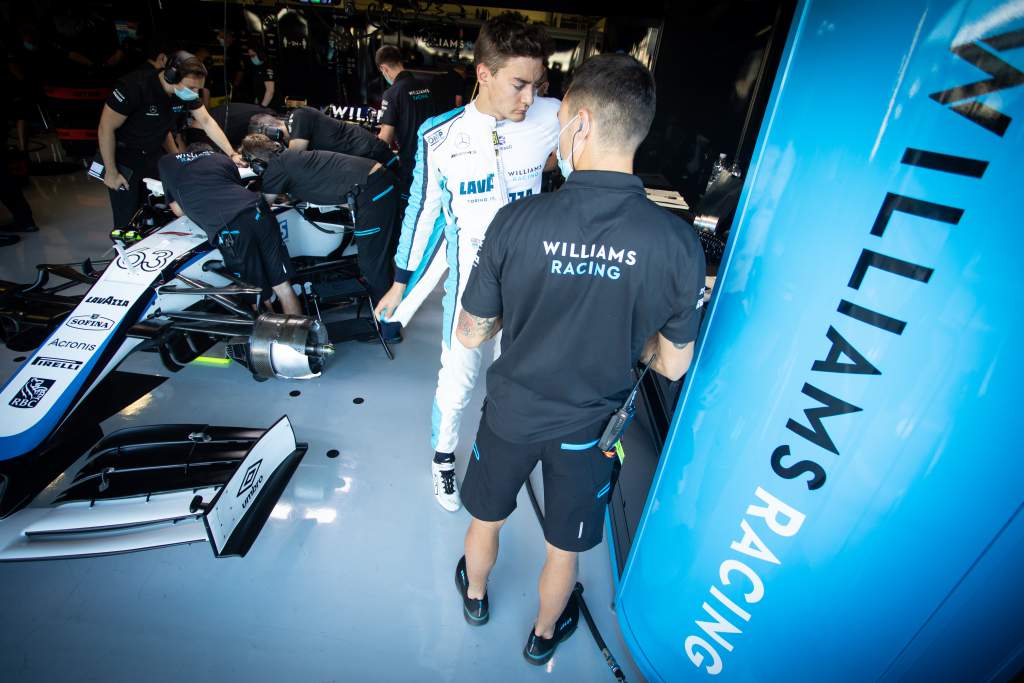
Already skating on financial thin ice primarily thanks to the strains of F1’s lopsided business model, the COVID-19 pandemic forced Williams to bite the bullet and put itself up for sale. Dorilton Capital’s acquisition of the company was completed in August and the Williams family subsequently bid an emotional farewell to F1.
The investment from Dorilton has had a dramatic impact, not with swingeing changes but by supporting a trajectory that had already been set. It also gave personnel a sense of stability and renewed purpose.
Dorilton’s arrival didn’t have much of an impact on this year’s car, beyond ensuring a healthier spares supply, but as well as clearing the sizeable debt factory facilities are being refreshed and upgraded. Talk about long-term stability and investment might sound dull, but for a team that had out of necessity become hand-to-mouth, it’s manna from heaven.
Over the winter, the key challenge was ensuring the car was ready for testing. This was achieved comfortably enough (by F1 standards) but also with a more collaborative approach across the various departments involved in design and development. The result was a car that was not only ready, but despite being a little rudimentary by frontrunning standards, was tidy, effective and well-conceived. This, of course, was originally conceived as the end-of-the-line season for these rules before the new technical regulations reinventing F1 were deferred to 2022, so cloth had to be cut accordingly.

“Looking at the aero of trackers, the team had struggled the year before getting the flow structures to work in a way that yielded a lot of performance,” says acting team principal Simon Roberts, who joined the team in June as managing director F1.
“In aero and other areas, it’s been a massive effort to improve the car and at Spa we were 2.47 seconds a lap quicker than the previous year. We were the most improved team in Spa and that’s credit to all the hard work that went in.”
What’s most confidence-inspiring about these gains is the way they were achieved tallies with what the team talked about last year. The 2020 car was not a complete reset from its predecessor, the unloved FW42, but built on the fact that it was a viable, if undercooked, platform for development.
“Fundamentally, the core architecture of the car was not the problem,” says chief engineer Adam Carter. “In quite a brave move considering how poor the performance was in 2019, we held onto some of the core architecture so that we could maximise the investment into the areas that we thought needed the most attention.
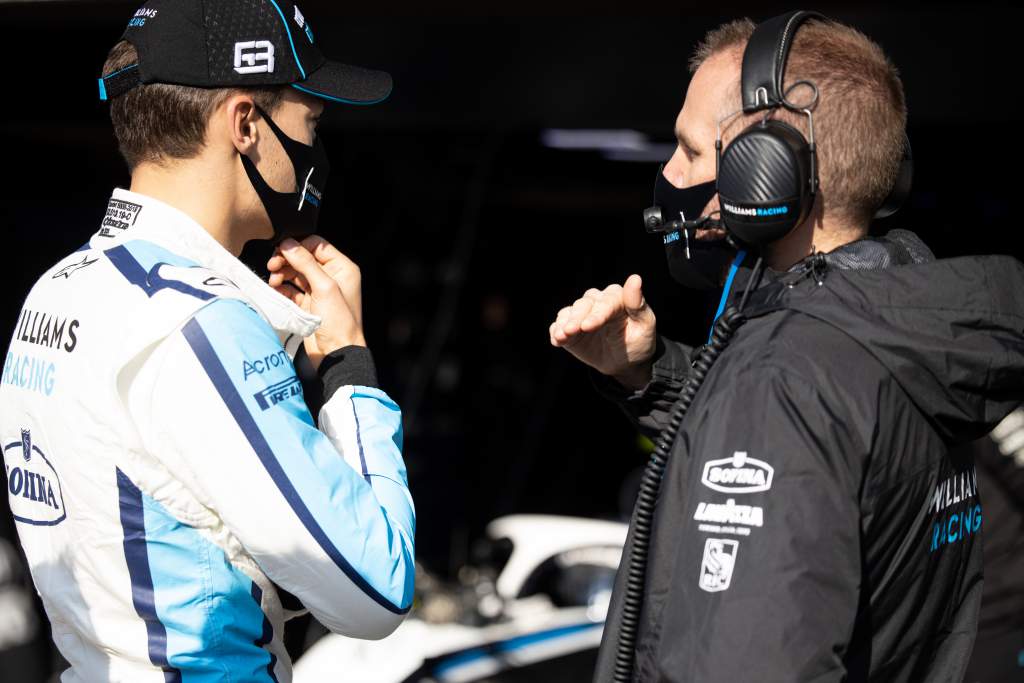
“In terms of chassis structure, cooling package layout, transmission etc, we didn’t try to reinvent it or say ‘we’re so far behind, we need to throw everything up in the air and do everything differently’. Yes, there is performance opportunity in all of those areas but hanging off the back, our objective was to get back into the car and then create a platform to move forward.
“We were consolidating our position so we could maximise our resource investment into what we identified as our performance opportunities. Our true hotspots that we needed to get ourselves back on the right path.”
With the fundamentals retained, it was all about choosing the key areas to focus on. It spoke well for the way the relatively new technical structure operated that this process yielded a healthy step forward in performance. Identifying the low-hanging fruit after last year’s struggles was key to maximising the step forward for a team not working with a massive budget.
The FW43 unquestionably had more downforce than its predecessor and in F1, downforce is laptime. It started out little heavy and it wasn’t until the Eifel Grand Prix that it could run at the weight limit (depending on the car configuration chosen) thanks to an ongoing process of reductions.
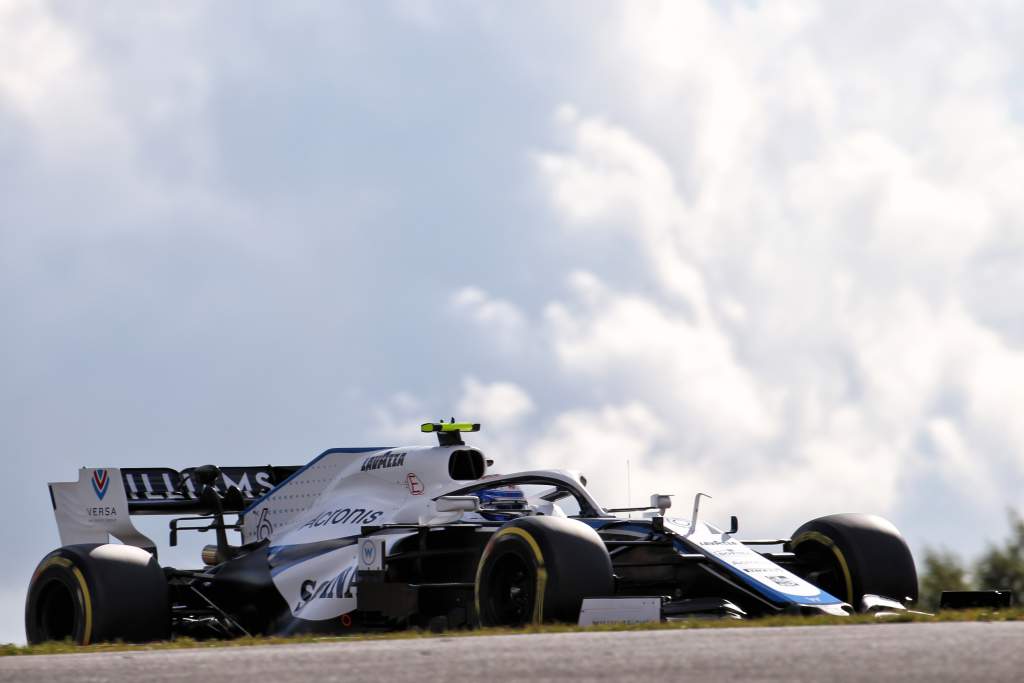
But there was no attempt to hide the fact the FW43 was too draggy early on. This wasn’t the consequence of missing targets or any fundamental error, merely a symptom of the circumstances with the downforce gains the initial priority over eliminating drag.
“We are, like every team, bandwidth-limited so we have to choose the order in which we want to play things out,” says Carter. “Coming into 2020, carrying some of that drag over from 2019 is part of the compromises you make, because if we want to do certain changes, we have to bite off the amount we can chew and go with it.
“So some of it was a quid pro quo of the decisions made to lock down architecture, do certain areas of development for the launch car and then you have your development programme coming afterwards. We’ve been able to eke some of the drag off it afterwards.”
Underpinning the aerodynamic changes, there was also plenty of work on the design under the skin. During pre-season testing, members of the race team commented on how much more elegant the FW43 was under the surface than last year’s unloved machine and this also reflected the efficacy of the technical management.
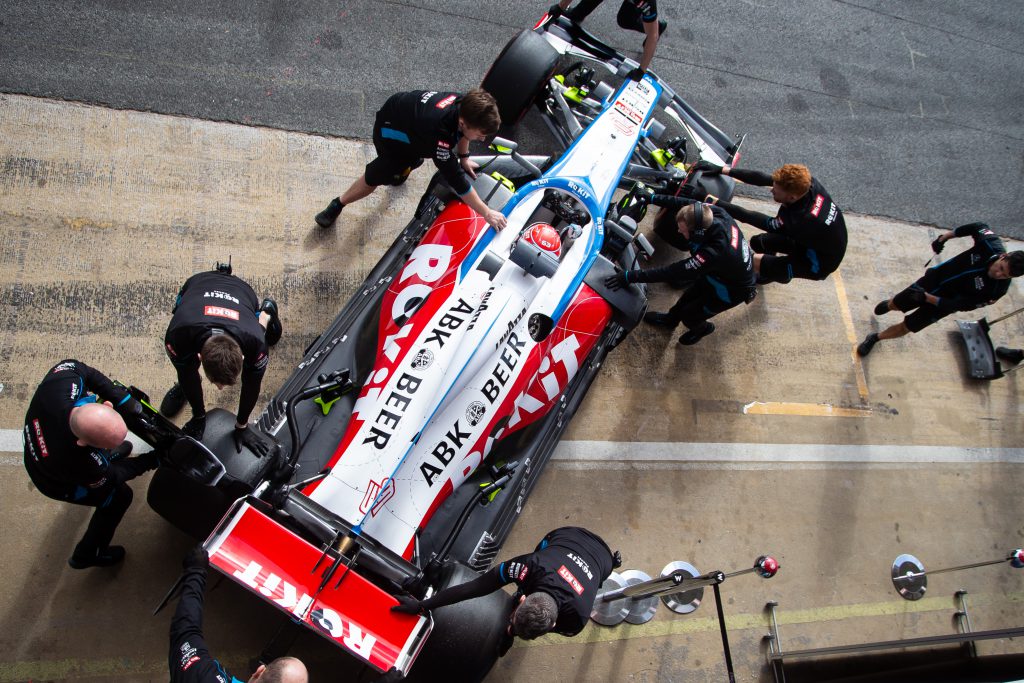
“Having the architecture locked down earlier allows us to do more design iterations, more design loops, more structural efficiency loops, packaging detail etc,” says Carter. “If you look at the packaging under the body, the car is exceptionally clean – all the underbody aerodynamics, the packaging detail, the wishbone structural efficiency, the detail around the uprights etc.
“The guys and girls in the design team have done an absolutely exceptional job there. That also comes from making big, bold decisions early and giving them known constraints to work in and then letting them go at it. If you get the detail right at design level, you get the detail delivered at the manufacturing level as well.
“Launching that car in Barcelona in February, the design detail was exceptional. That’s testimony to everybody in the design group, manufacturing group, the race team group delivering that car.
“There’s performance in there through weight, through detail design – so making sure of limiting the losses, achieving the repeatability and the performance delivery as well. All the performance gains to move us forward have actually come from all areas in the business. It’s about giving the opportunity to deliver that performance.”
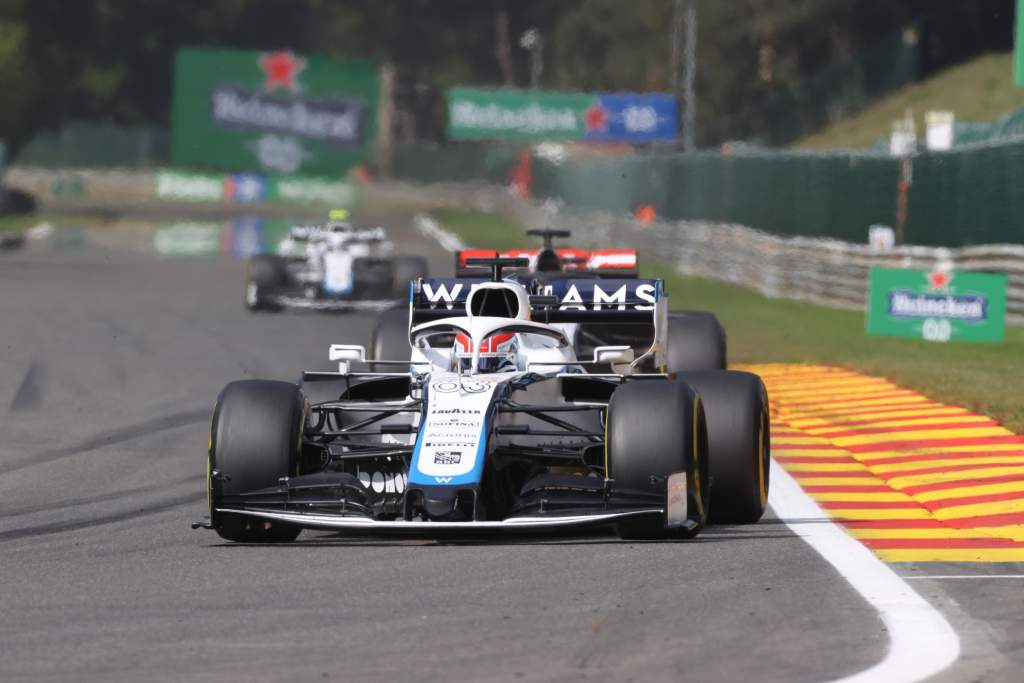
Aerodynamic progress was also made during the season. The low-downforce rear wing introduced at Spa worked particularly well and then the new high-downforce specification that appeared at the Nurburgring gave Williams the two extremes – with an intermediate step also occasionally appearing.
Williams also showed a knack for judging the aero trade-offs for less-familiar circuits well, which helped to boost its performances at circuits like the Algarve – where it was a season-best 1.7% off pole position – and Imola. That also reflected the quality of the job done by the trackside team led by head of vehicle performance Dave Robson, which is spoken highly of by both Roberts and Carter.
“We’ve gone to the new circuits and particularly excelled at those and I think that is a reflection of how good we are trackside,” says Robson when the suggestion that the race team has performed strongly this year is put to him by The Race. “We generally do a good job with that we have.
“We do have a strong race team, from the mechanics through all the engineering disciplines, the support from the factory. We’ve got to find the car pace now.”
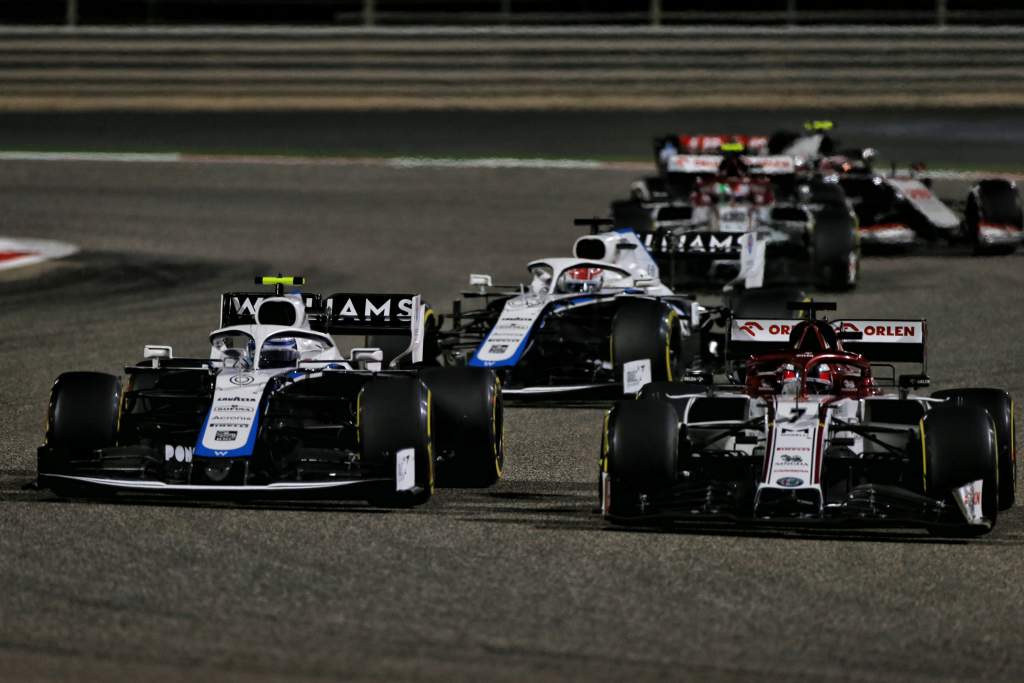
The battle between Williams, Alfa Romeo and Haas was conclusively won by Alfa Romeo both in real terms thanks to its haul of eight points and also in terms of the results between the teams. But while Williams was the strongest in qualifying, with 10 appearances in Q2 – nine for Russell and one, at the Hungaroring, for Latifi, it was only the leading ‘Class C’ team twice in races – in the Bahrain and British Grands Prix.
That was perhaps a little unlucky given races such as Mugello, where Russell was running in the points but dropped back at the second standing restart, Imola and then Sakhir where Latifi was heading ‘Class C’ before an oil leak manifested itself.
The starts were, in general, a problem for both drivers with one or two millimetres on the clutch paddle the difference between wheelspin and bogging down, and a tiny sweet spot in the middle. But if you reallocate points only to the six ‘Class C’ cars, Williams was the second-best ahead of Haas, which reflects a decent set of results.
The offset between qualifying and race performance was striking, particularly early in the season before this was closed. Russell led the way in qualifying in ‘Class C’ seven times, equal with Alfa Romeo, but often couldn’t hold that in the race.
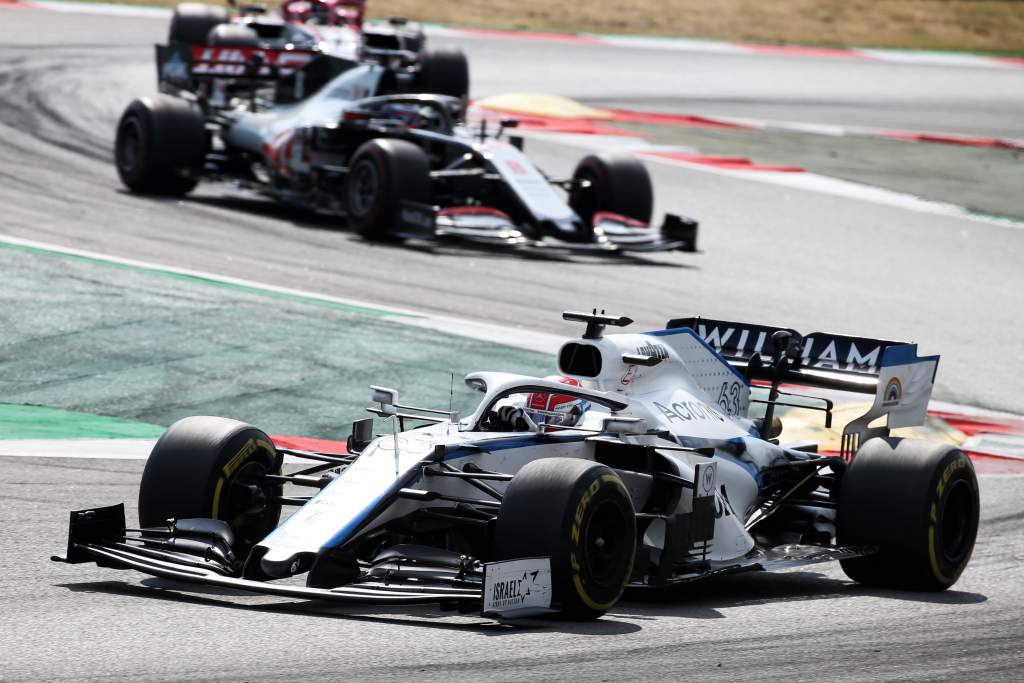
“Between ourselves, Alfa and Haas it’s very hard to predict going into a weekend who is going to qualify well and who is going to race well,” says Roberts. “We don’t deliberately set the car up for qualifying or for racing, we’re trying to get the right balance.
“Generally, the car prefers a low-downforce configuration and it definitely prefers the soft for one lap. But that’s not because we’re trying to make it do that, it’s a consequence of not having the downforce and therefore we get an amplified effect of the soft tyre in terms of grip.”
Judging the season as a whole, it’s difficult to escape the conclusion that the Alfa Romeo was a stronger car all-round. The full potential of the Williams was extracted more often in qualifying, but often it appeared to regress to the mean come Sunday.
The car struggled more at front-limited tracks, but overall the performance trend was encouraging. During the second half of the season, save for the anomalous Turkey weekend where the peak laptimes were compromised, the car’s deficit was usually in the neighbourhood of 2.5% to the front – lower than its overall seasonal average. Russell was key to extracting that potential with his sensational qualifying performances, backed up by many accomplished race drives to unheralded results. Latifi struggled on Saturday, but he turned in a decent set of Sunday performances in his rookie season.

Evaluated in isolation, it would be difficult to be positive about the Williams team’s 2020 season. But context is everything. The combination of the recovery to respectability that reflects improvements in design, development and production, and the fresh investment from the new ownership, makes this a hugely important year.
Twelve months ago, Williams was a team with a muddy future. But it has emerged from last year’s competitive disaster and COVID-19-inspired financial problems with a promising future – helped by the F1 rule changes over the next couple of years with the cost cap coming next year and then the 2022 regulation changes.
There are years where a team’s success should not be measured purely by on-track results. Williams in 2020 has to be viewed through a different prism as it firmly established a base camp for the rise that needs to follow over the coming years.
That makes 2020 the definition of a qualified success for Williams.






